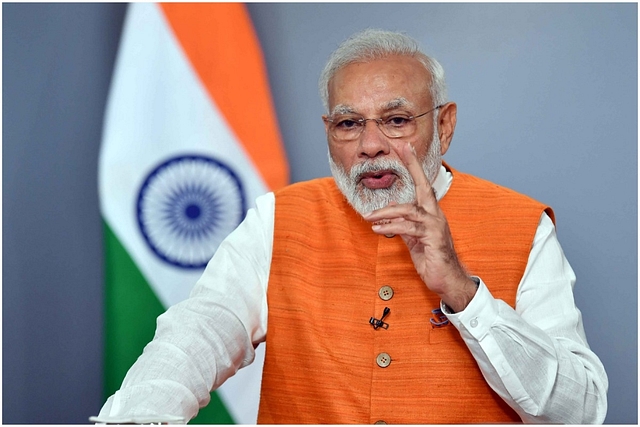
Why The Corporate Tax Cuts Are A Historic Reform By Modi Government
‘Shift to India’, ‘Make in India’ and ‘Stay and Grow in India’ – those are the messages from a clearheaded and resolute regime.
One distinctive feature of the Bharatiya Janata Party (BJP) government under Prime Minister (PM) Narendra Modi has been its responsiveness and its openness to ideas. PM Modi has always looked to seek feedback and then decisively act on the relevant ideas he gets from various quarters of the country.
Finance Minister Nirmala Sitharaman announcing perhaps the single biggest financial sector reform in many decades is a testimony to this working style of the Modi government.
As global economy slows down, global trade wars escalate and as all big manufacturing economies find themselves in trouble, India could stand out on the world stage through big changes. Slashing corporate tax rates across the board is exactly that big bang move which sharply enhances India’s investment attractiveness.
There are four major implications of India lowering its corporate tax rates.
Firstly, India now has amongst the most competitive tax rates in the region. At an effective rate of just over 25 per cent inclusive of all levies, businesses in India need not find ways to reduce or evade their tax burden.
With phasing out of exemptions, the compliance burden also reduces for these firms.
With more money in hand, Indian firms can choose to further invest in growth or can reduce their product prices or choose to give more money in the hands of their employees.
All moves will eventually have positive economic impact.
Secondly, India has announced a lower tax slab of 15 per cent, translating to just over 17 per cent effective rate, for new manufacturing businesses. This is a clear signal that the Modi government is serious about Make In India and wants to promote domestic manufacturing.
This incentive would mean that companies can expand operations through new subsidiaries as long as they incur capital expenditure as well as encourage small and medium size firms to venture into new business areas.
The enhanced manufacturing activity will lead to new job creation – not just in the short run, but on a consistent basis.
Thirdly, this is not just a signal for Make In India. This is also a critical signal for Shift To India.
In the currently ongoing global trade war, several companies are looking to exit China. Under pressure from the United States of America (USA), several firms are looking to relocate to prevent additional duties on their products which ship to China.
With increasing labour costs, China is anyway losing manufacturing activity in areas like textiles, chemicals and light machinery. All these players seek new avenues to put up their factories. With its human resources, globally integrated workforce and now super-competitive tax rates, there is no better destination than India.
Fourthly, India recognises the value of all stakeholders in marching towards the $5-trillion gross domestic product (GDP) target. The government has made it amply clear that enhanced investments are critical to achieve our growth ambitions. And the business environment in the country has to be friendly, where the government encourages new entrepreneurship.
The continued influence of the historic policies since 1950s has made India a country which tends to distrust its businesses. We need to differentiate between being business-friendly and cronyism.
The Modi government has re-established rules-based governance without fear or favour and has ended cronyism. Everyone who helps India grow will be respected, but everyone will be treated equally in the eyes of law. Reigniting the spark of entrepreneurship is a big gain from this move.
Politically, this is also a strong manifestation of the government’s intent. This Modi government is a pro-incumbency government with a mandate to grow Indian prosperity. The tax cuts clearly bring out the best between the power of a majority government and a clear-headed intent and determination to act in Indian interests.
This decisive overlap between politics and economics has been historically missing in India. But of course, the Modi government is a positive exception in this regard.
Taking advantage of this announcement, India should confidently invite big global manufacturing companies to India as well as encourage Indian companies to expand their operations.
States can make their own pitch for new investments. India has always been the land of innovation. There is no doubt that Indian politicians will soon compete to pull new manufacturing investments to their states. Issues like land availability, labour laws and human capital are largely in the domain of the states. The ones which leverage tax cuts and link them to improvements in these other areas will win the race.
India can also now sign new free trade agreements with friendly countries or trade blocks as a competitive manufacturing destination.
The threat of others dumping goods on India will be much lesser. With the impending Brexit, slowdown in Europe and the USA and China not seeing eye to eye on trade, India can certainly lock in new trade partners by balancing local manufacturing and imports and negotiating from a place of strength.
This move has been widely welcomed by the captains of the Indian industry as well as the stock markets. Reduced tax burden will add to the bottom-lines of the listed firms, making them more attractive via improved earnings. This was amply reflected in the stock market movement on Friday September 20, when the Sensex - the Bombay Stock Exchange index - zoomed almost two thousand points on a single day.
The corporate tax cuts have created a very business sentiment in the country. This sentiment itself will drive animal spirits and give fresh impetus to the economic activity.
Shift to India, make in India and most importantly – stay and grow in India while helping India prosper as well – that’s the clear message from a clearheaded and resolute Modi government.